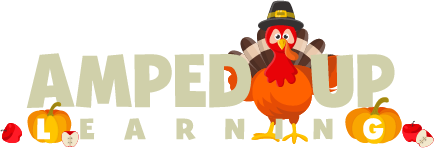Equipping Educators and Students for Social Impact
Equipping Educators and Students for Social Impact
You’re molding futures—or chasing your own. Explore how education in 2025 empowers teachers and learners for social good. From classrooms to online platforms, here’s why it’s timely and how it works.
Education’s pulse beats stronger than ever. You’re not just passing on facts—you’re shaping lives with real-world stakes. For educators, homeschooling parents and students eyeing online paths, social impact drives the mission. Let’s unpack how this unfolds in your hands.
Sparking Change Beyond the Classroom
You’ve likely noticed education stretching beyond traditional walls. As an educator, you’re guiding students toward purpose—dissecting food insecurity’s systemic drivers in a civics lesson with USDA data on SNAP enrollment or unpacking mental health stigma in small-group talks. As a learner, you’re chasing skills that carry weight, no matter your stage. Online programs rise to the challenge, especially in social work. Many masters of social work online degree programs deliver a 60-credit curriculum for newcomers, weaving virtual coursework—think human behavior theory or ethics seminars—with field placements totaling 900+ hours, often in juvenile justice centers or domestic violence shelters. This isn’t just a degree; it’s a launchpad for social good.
The scope sprawls. The National Association of Social Workers tracks over 750,000 social workers in the U.S. as of 2025, with demand climbing as aging populations and mental health crises swell caseloads. You can harness this—steering a student toward this path as a counselor or embedding advocacy into homeschool lessons, like mapping local resource gaps with county welfare data. It’s education tethered to communities in need.
Tools That Teach and Transform
You’re navigating a world prizing adaptability, and online MSW programs deliver with unyielding depth. You’d tackle trauma-informed care—learning to spot dissociation cues—or policy analysis, tracing how Medicaid expansion alters rural healthcare access. The Council on Social Work Education mandates 900+ hours of supervised practice, often hitting 1,200 in advanced tracks, where you might shadow a hospital social worker crafting end-of-life plans. Expect asynchronous modules on Canvas, live debates via Microsoft Teams and virtual simulations—de-escalating a family dispute with Simucase.
As an educator, you can reflect this resilience, showing students how to juggle priorities, or weave these stakes into lessons—analyzing how housing instability hits attendance, backed by 2025 Census poverty stats showing 12% of U.S. kids in need. For students, it’s transformative. Whether you’re a single parent studying post-bedtime or a mid-career nurse, the tech aligns with your life. Platforms like Amped Up Learning could inspire scenarios—balancing confidentiality against reporting laws in a child welfare case. It’s learning that sticks.
The Numbers Paint the Picture
You can see the stakes in the data. The Bureau of Labor Statistics projects a 9% rise in social work jobs by 2032—over 63,000 new roles, spanning school support to substance abuse recovery (check their Occupational Outlook Handbook). Online MSW grads are primed for these, equipped with skills like motivational interviewing or crisis intervention honed through virtual overdose scenarios. As an educator, you’re poised to guide students into these fields; as a learner, you’re entering a purpose-driven career.
Cost sharpens the focus. Traditional MSW programs often top $50,000, while online tracks hover around $37,000 for in-state students—roughly $617 per credit over 60 credits, with aid like Pell Grants cutting deeper for 40% of enrollees per 2024 Ed Department stats. A 2023 Wiley report found 74% of online learners boosted job prospects post-degree, reflecting employer demand for digital fluency. Add zero commutes, and you’re maximizing resources—key for educators or students breaking in.
Focusing on Social Work’s Digital Edge
Here’s where online MSW programs shine for you. They’re central to social impact education. As a teacher, you could revamp a civics unit—charting how SNAP funding shifts affect nutrition, using USDA’s 2025 data showing 15% of households food insecure—or as a student, gain tools to aid families with eviction prevention models. Timing aligns with urgency: CDC data shows youth mental health challenges up 40% since 2019, with 2025 seeing counselor shortages at 408:1 ratios per the American School Counselor Association. These programs meet that need head-on.
The digital edge deepens engagement. Virtual role-plays on Simucase train you to mediate custody battles or guide teens through panic with grounding exercises. Discussion boards unpack cases—spotting trauma in a withdrawn student or weighing safety plan ethics. As a homeschooling parent, you might adapt this—launch a shelter project tying USDA 2025 hunger stats to policy gaps like underfunded WIC. With mental health and equity topping headlines, online MSW programs equip you to lead with rigor and relevance.
Final Insight
Equipping for social impact is your mandate—and your legacy. As an educator, you wield tools to ignite change, sparking students’ potential to reshape communities. As a student, you carve paths to heal and lead, armed with skills that echo beyond 2025. Online MSW programs fuse flexibility with urgency, meeting a world that demands more from you every day. This is education redefined—bridging classrooms to communities, one step at a time. So take that step: explore these programs or weave their lessons into your next class, and watch the ripple effect unfold.
Recent Posts
-
Helping Students Reengage with Learning: Approaches That Rebuild Confidence and Motivation
Helping Students Reengage with Learning: Approaches That Rebuild Confidence and Motivation Student d …Nov 24th 2025 -
Building Confident Language Learners: Classroom Techniques That Make Second-Language Acquisition Less Intimidating
Building Confident Language Learners: Classroom Techniques That Make Second-Language Acquisition Les …Nov 24th 2025 -
How to Use Technology to Boost Student Engagement
How to Use Technology to Boost Student Engagement Students in traditional classroom settings are hav …Sep 16th 2025



